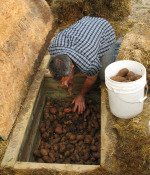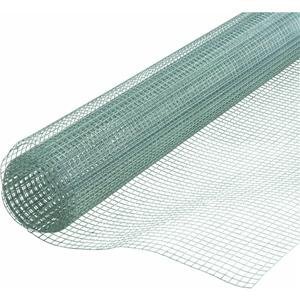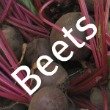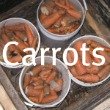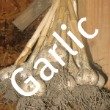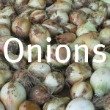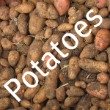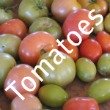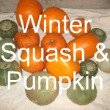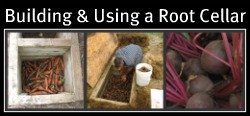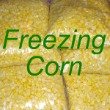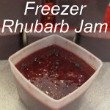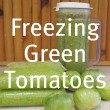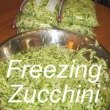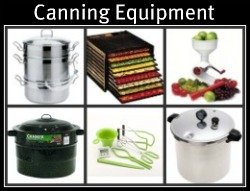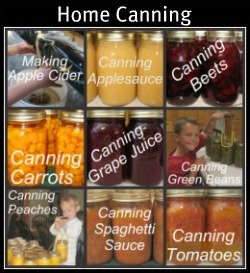|
Root CellarA root cellar is a great place to store 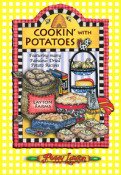
Benefits of Cellars Benefits of CellarsHere are three reasons for having a cellar:
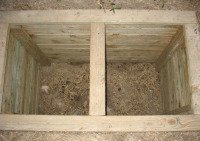
Root cellars are in the ground because root vegetables like potatoes, carrots, and beets need to stay Moist & Cool.
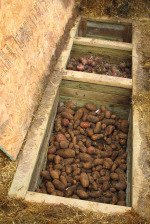
Storing PotatoesPotatoes last all winter in the cellar.
Potatoes contain approximately 80% water and therefore need to be stored in a humid location to prevent them from drying out. Storing potatoes in a dry place will cause them to become dehydrated. In commercial storage facilities, potatoes are stored at 90-95% relative humidity. (RH), but home environment are typically not this humid. A potato tuber accumulated chlorophyll when exposed to light, which turns the tuber green." University of Idaho Extension Look at that! You’ll never have to buy new potato starts again. Just use your old sprouting potatoes. Great money saver!!! Make sure to save your best potatoes to replant. The new potatoes will be in the image of their mother potato. If you plant the small, leftover potatoes; you'll harvest small puny potatoes. See Growing Potatoes Storing Carrots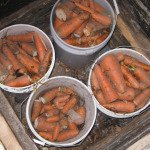
When you dig up your carrots and put them in the cellar, put the larger carrots on the bottom. Use the smaller carrots first because they don’t last as long as the big carrots. Cut off all the green so that the carrots don't start sprouting. They last longer this way. Another way to store your carrots is to leave them in the ground all winter. You can dig up your carrots whenever you need them. Storing carrots this way keeps them tasting really sweet. To keep the ground around your carrots from freezing, cover them with straw or leaves. To keep the rain and snow out, place a tarp on top of the straw and leaves. Use rocks or logs to hold your tarp down. Your carrots will stay fresh all winter. They’ll start to get mushy when the ground begins to thaw in the spring. If you have any left when the ground begins to thaw, dig them up and make carrot juice. Fresh carrot juice is a great source of nutrition, and it's yummy! We’ve tried root cellars and leaving them in the ground. Both methods work. I prefer the vegetable cellar because I don’t have to dig carrots in the middle of the winter.
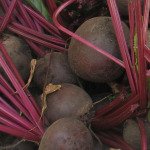
Storing BeetsBeets will last until February or March in the cellar. When they start to go bad, they’ll get a little moldy and soft. They’re great while they last.
Canning Beets is another way to preserve you beets. I can some and put some in the cellar. Use the fresh beets first. Also see Growing Beets. Building a Cellar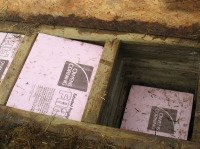

There are many types of root cellars. I’ll teach you how to build a simple cellar that works. We’ve built some that haven’t worked, but I don’t need to go into that story.
Click here
to download plans for building this simple cellar.
|
